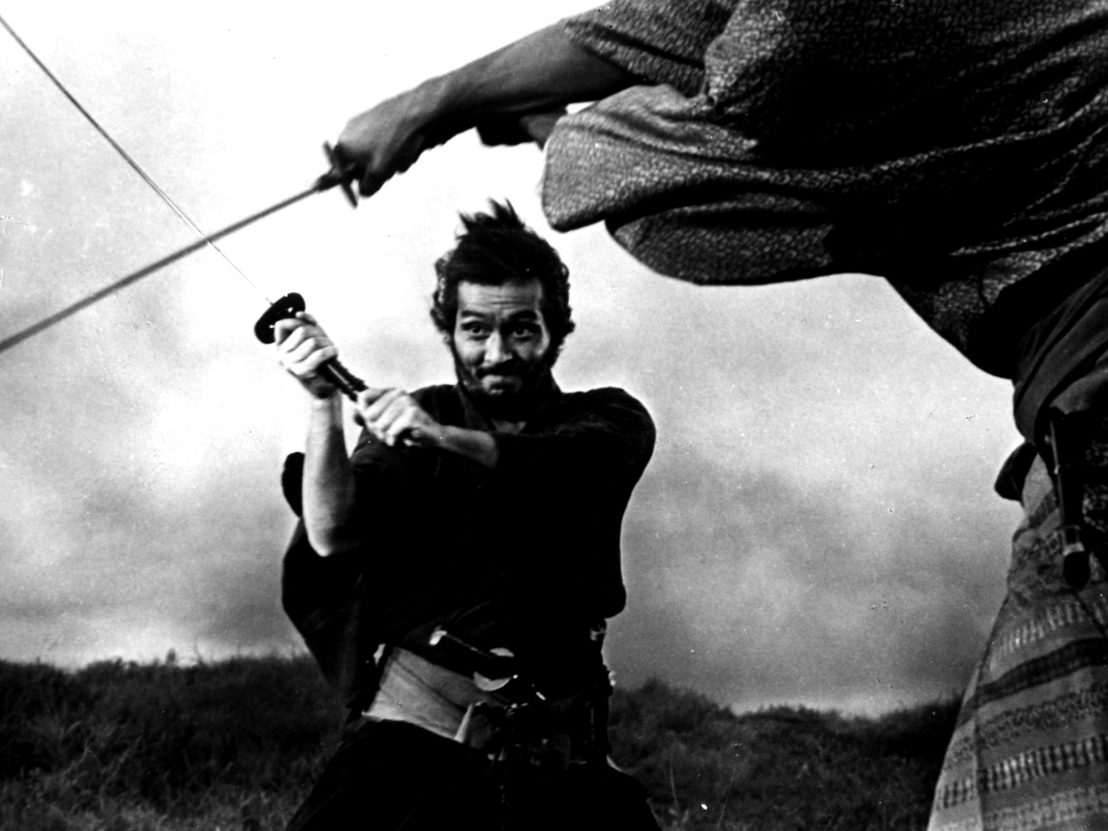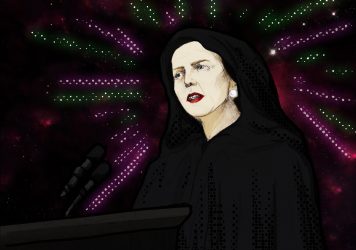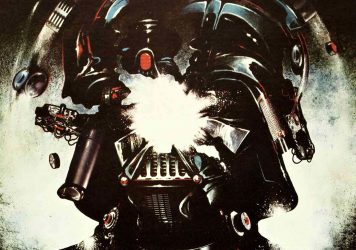
The influence of Asian cinema on Star Wars is well documented. Famously the Jidaigeki genre of films, predominantly the work of Akira Kurosawa, had a major impact on George Lucas at a time when he was starting to discover world cinema. Set on making a Flash Gordon-esque space opera on a Roger Corman-esque budget, he intended for Star Wars to be a B-Movie hero’s journey (literally) by the book.
Inspiration for the peripheral droid character narrative came directly from Kurosawa’s The Hidden Fortress, and Lucas wanted to make his film half in Japanese, with Toshiro Mifune playing Obi-Wan. While the final product appropriated a range of Japanese storytelling devices rather than directly incorporating the culture, it’s a respectful homage as opposed to a shameless take. Jedi was mined from Jidaigeki, the peasants became R2D2 and C3PO, and the escorting of Princess Yuki became the saving of Princess Leia.
Much like an artery pumping myth and magic through the Star Wars saga, Asian cinema has influenced the storytelling of A New Hope to Phantom Menace and beyond. As the series expanded and exploded into the pop culture zeitgeist Lucas used his authority to increase the eastern influence on the story. Anthropomorphism took a more central role in The Empire Strikes Back particularly in the shape of Yoda, who himself was inspired by Kambei from Seven Samurai.
Also introduced in Empire is the connection between the Jedi and the spirit world, less in the gothic Western sense but instead closer to the spirituality of classic Japanese text ‘Ugetsu Monogatari’. In the book author Ueda Akinari focuses less on the physical and moral effect of the supernatural and rather explores the emotive aspects of the living and the spiritual. In many ways Luke’s training embodies this; he seeks not to know all nor weaponise his strength but rather to enhance it by connecting to the organic world.
This all stems from a fundamental tenet of Asian storytelling; the balance of light and dark. The Chinese philosophy of yin yang is about the interrelation of light and dark – one depends on the other. And the same is true in the Star Wars universe. Explored in the original trilogy, deconstructed in the prequels and reconsidered in the new films, the mediation on goodness is best explored in Darth Vader and now Kylo Ren; each wrong most in their interpretation of righteousness. It is no coincidence that the heroes in Star Wars are the rebels and outlaws, nor that the currency of goodness is honour and the fulfilment of destiny.
In 1980, Lucas earned a credit on both The Empire Strikes Back and Kagemusha. Again exerting his new found power to send the elevator back down to the Asian cinema which so influenced him, Lucas and mentor Francis Ford Coppola convinced 20th Century Fox to supply funding that enabled Kurosawa to finish his film, it having sat for years on the shelf awaiting completion. The dream sequence of Kagemusha had a clear influence on the Cloud City scene in Empire, and Asian cinema would have direct visual homages throughout the future of Star Wars.
The forest scenes of Return of the Jedi and The Force Awakens nod to Kurosawa also, who was one of the first mainstream cinemas post war to take the large and heavy equipment into forest locations. The beach and desert scenes of Rogue One use a colour pallet similar to Wong Kar-wai and Zhang Yimou’s wuxias Ashes of Time and Hero. Colour, costume, mythology, weaponry and location on both a large and subtle scale are rooted in Asian culture. One of the most memorable scenes in The Last Jedi, with the slicks of red salt beneath the surface of Crait are a nod to the blood slicks in the powder during Lady Snowblood.
The clearest influence that Asian storytelling has had on Star Wars is thematic, particularly through the characters at the heart of the story. Villainy is explored less through a western fairy tale understanding but rather through the western construct of misunderstanding and tragedy. Hayao Miyazaki best articulated this with his Flawed Concept of Good versus Evil; controlled evil being the gateway to goodness – that heroism is about seeing with eyes unclouded by hate.
If we consider this hypothesis then Vader’s tragic arc, mirrored by Luke in Last Jedi, is less of men who seek to be bad but rather those who question the order of goodness. They believe the Jedi prevent order in the galaxy, and either oppose or abstain from the Jedi cause. They’re wrong – but in a flawed way, rather than a villainous way. Kylo perhaps is the ultimate embodiment of the complex relationship of good and evil.
As the saga continues, Asian culture continues to inform the look and feel of the Star Wars universe. Be it casting, props such as Rose’s sister’s yin and yang necklace, or Luke’s Ahch-To clifftop meditation, the appropriation of Asian culture becomes more apparent across the galaxy. But it’s always been there, and it’s always been honourable. If anything, Star Wars has always been an amalgamation of Eastern and Western influences (Kurosawa himself was heavily inspired by the work of John Ford).
But while he looked West to reinvent cinema in the East, Star Wars now seems firmly set on looking across the pacific for inspiration; Han Solo’s masterless rogue servicing the needs of crime lords is to Kurosawa’s Yojimbo what New Hope was to Hidden Fortress.
Published 4 May 2018

The Japanese director’s bleak and beautiful 1985 film returns to cinemas.

By Rob Trench
Exploring the unlikely origins and surprising evolution of a worldwide cultural phenomenon.

Weird and wonderful artwork for George Lucas’ original saga.